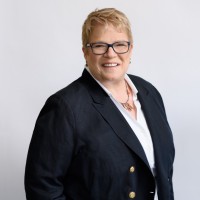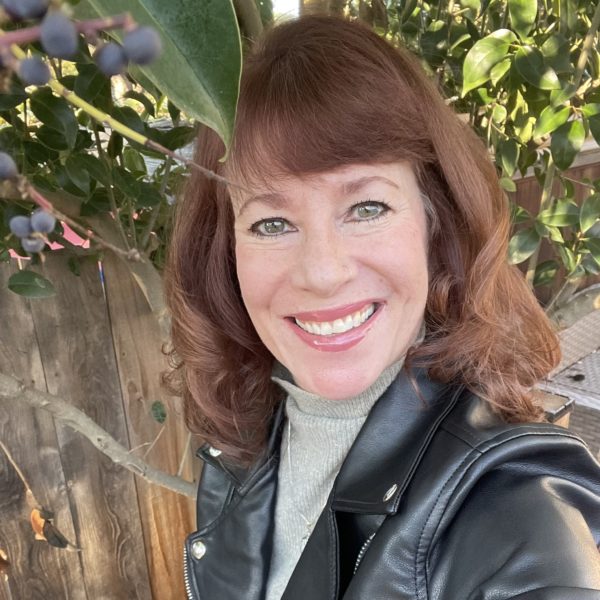Streamlining the Sales Process to Align with the Buyer’s Journey
1.4K View | 13 Min Read
The sales process, despite its seller-focused title, involves two agendas simultaneously––that of the seller and that of the buyer. It can be challenging when these two agendas become too far removed from one another. With that misalignment, sellers lose the ability to create a successful and well-communicated bridge between the buyer’s need and the seller’s solution.
A sales process equipped to reach its maximum potential success is one that considers the needs of both buyers and sellers. When sales motions are streamlined and aligned to the buyer’s journey, every step of the selling process will be aligned with the needs of the buyer at that particular stage.
In today’s economic climate, changing market conditions and shifting buyer needs make it difficult for sellers to reach high levels of attainment using traditional methods of selling. In order to be effective, sales processes need to evolve along with the buyer. While trying to realign the selling process to the buyer and consider the contingencies of the market, sales enablement, in its collaborative cross-team positioning, can play an immensely beneficial role.
Below, learn about the marks of a sales process well-aligned to the buyer’s journey and how enablement can help facilitate a successful and productive relationship between the buyer and the seller through process optimization.
The Difficulties of a Misaligned Sales Process
Before examining how to create a buyer-aligned selling process, it is important to understand what a misaligned sales process looks like. Traditionally, two schools of thought exist when sellers are mapping out their sales processes: to create it on a linear track or map it towards an ideal state. Placing too much weight on either of these systems can prove to be detrimental.
Typically, a linear sales process tends to inherently be an internally focused process. Sellers think about how to divide the different stages chronologically and proceed down these steps accordingly. However, buyers in today’s world no longer operate in that way. Instead, they might backtrack or skip and return to different stages––meaning that sellers who are tracking their progression linearly can become disconnected from their buyers.
“It becomes very difficult then to think holistically about the process and think about how that maps to your customer’s journey,” said Pam Dake, head of global revenue enablement at Cyolo. “Because, again, it’s all about how our buyers want to buy. You don’t want to over-engineer your sales process to where it’s internally devoid of what’s happening with your customer and your buying audience.”
Mapping the sales process too close to an ideal state can also fail because it can become too far removed from realistic buyer motions and business structures. An excessively idealistic goal makes measuring effectiveness difficult, as these types of new strategies require a significant amount of time to determine how buyers actually respond to and engage with it, as well as how effectively it functions within the company.
An effective sales process rotates around the behavior of the customer it wants to succeed with, and sticking too closely to a linear, internally-focused strategy or an ideal removed from actual buyer behavior risks alienating potential clients.
Instead, an effective sales process begins with thinking about how buyers can best be supported throughout the selling journey. When customer buying motions are first identified, sales motions can then be aligned to their buying process, creating a sales process that follows and encourages the movements of the buyer.
Sheevaun Thatcher, vice president of global sales and success enablement at Slack, says the importance of making such an effort to align with the customer journey stems from the contrast between the technical nature of the sales process and the more strategic angle of buying motions. She recommends thinking of the people involved in the selling process in the form of a triangle, where the customer sits at the top.
“When you do that and you make everything customer focused, you focus on what it is they really need,” said Thatcher. “Then, you can back it out from there and get yourself a really good process that’s activity based and customer based.”
Effectively Rolling Out Sales Process Changes
If sales reps are following a current sales process and find that their attainment has not been ideal, it might be helpful to examine how well that process aligns with the buying journey of their customer. After assessing the sales process and identifying any gaps in its alignment, making changes to or creating a new process altogether may be necessary. To avoid disruptions as change is introduced, consider three components that establish and maintain the effectiveness of the process while navigating change: the who, the how, and the when.
- The Who: Involve leadership. Gaining the approval of upper management early on in the design of the sales process streamlines the process from the start so that by the time it reaches first-line managers and sellers, the sales process has been polished for optimal execution.
- The How: Tailor implementation to the selling group. If changes to the sales process have left certain sellers or sales teams struggling, meet with them individually to gauge their status and support them in any issues they are encountering. On the other hand, if changes will impact many large groups, involve everyone in a collective effort to make that definitive switch.
“Sometimes it’s just better to rip off the bandaid and just say, ‘Okay we’re going, we’re starting on Monday: this is what we’re doing,’” said Thatcher. “You mobilize the enablement teams, you mobilize the support teams that need to be there to support this motion, but remember everybody’s already done it at least once.”
- The When: Respect the seller’s timeline. Because sales process changes can be disruptive to regular selling rhythms that a seller is accustomed to, it is important to consider the seller’s calendar before choosing when to launch updates. At Slack, Thatcher avoids rolling out new processes toward the end of the month, quarter, or year, so their sales enablement team can focus on supporting the sales team during those critical closing moments.
“You’re rolling out a new process, doing a new facilitation of learning,” said Thatcher. “In anything like that, you must respect that calendar.”
The Value of Sales Enablement’s Role
Those working in enablement sit in the prime position to foster interdepartmental relationships that ensure proper alignment across a company’s sales strategy. As a player in both leadership and frontline selling capacities, sales enablement professionals can communicate with either party to maintain the efficacy of the sales process.
“There’s not as much risk to tell us [sales enablement professionals] what’s not really working,” said Roz Greenfield, co-founder and chief enablement officer at Level213. “Our responsibility is to be the eyes and ears for that sales organization––for the sales leaders and the go-to-market leaders to be able to give that information back and forth and actually make it work.”
The ability to work among various teams across a company also provides sales enablement professionals the opportunity to partner with sales leaders and keep them updated and informed on best practices based on what is happening in the field and across the company.
“Enablement has their fingers in every single part of the company. We have relationships with legal, HR, finance, and product marketing,” said Thatcher. “All of that means that we’ve got a much bigger and clearer view of what’s actually happening in the company than pretty much any sales leader or any seller does, so it’s taking that and using that to inform what is really going on.”
Working with the senior sales leader is pivotal to ensure that sales enablement professionals establish a well-informed relationship with the sales team. Without sales enablement and that alignment with leadership, processes can easily become disorganized and fall apart.
“For any effective sales enablement program period, that relationship with sales leadership is the absolute linchpin,” said Thatcher. “If you do not have it, and you haven’t gone high enough in the sales organization, or you haven’t got agreement on accountability, nothing you do is going to work anyway––it’s just going to fail.”
What to Look for in an Effectively Aligned Sales Process
After the implementation of a new sales process, the next step must be to determine how well it is working. There are several indicators of a successful sales process that is moving towards its goals.
First, look for documentation of the process. Second, check the rates of adoption in sales teams and among sellers. Third, observe the degree of alignment with the buyer. If all three of these indicators are present and satisfactory, they should produce three types of results.
- Increased Quota Attainment: When sellers have well-documented adoption of new sales processes that show alignment with their buyers, they should be closer to their projected quota goals than those who did not.
- Higher Win Rate: Just as quota attainment develops, an organization’s win rate will also increase following the implementation of a well-aligned sales process. Greater buyer alignment leads to more won opportunities.
- Lower Voluntary Attrition: This is a useful metric to determine the success of a sales process because when it has been thoughtfully developed and works well, salespeople will feel supported rather than overwhelmed or overburdened.
However, one thing not to expect to see in any sales process is perfection. Creating a sales process is hard, and even the most seemingly foolproof plan cannot always retain its excellence because everything in the realm of sales will eventually change. The best thing to look for is the opportunity to improve. Even if a sales process does not start out as the best, the ability to recognize where and how to pivot from what’s not working is the strongest tool for rolling out a sales process.
“Don’t get yourself caught in analysis paralysis in either building either building the sales process or looking to refine the sales process,” said Dake. “You’re never going to have everything completely line up and have it be absolutely perfect. You can have it to a certain level where you need it to be in order to roll things out into better refinement over time as you move forward.”
Taking a balanced approach to creating a sales process tightly connected with buyers drives a strategy that is not only customer-centric but future-focused. Moving with the buyer allows sales teams to move with the flow of the market and anticipate changes and opportunities for innovation.
“Think of your sales process as dynamic. It’s not, you build it once and you walk away; it’s we build it, and then we learn, and then we watch to see what’s happening,” said Greenfield. “Then, we evolve it, and then we keep getting feedback, and we keep perfecting it so that the sales motion becomes more streamlined.”
As sales processes continue to evolve and build on buyer activity, sales enablement can both learn and teach how selling can adapt to new technologies and behaviors, building the sales process to expect and embrace any buyer changes in today’s constantly developing world.















